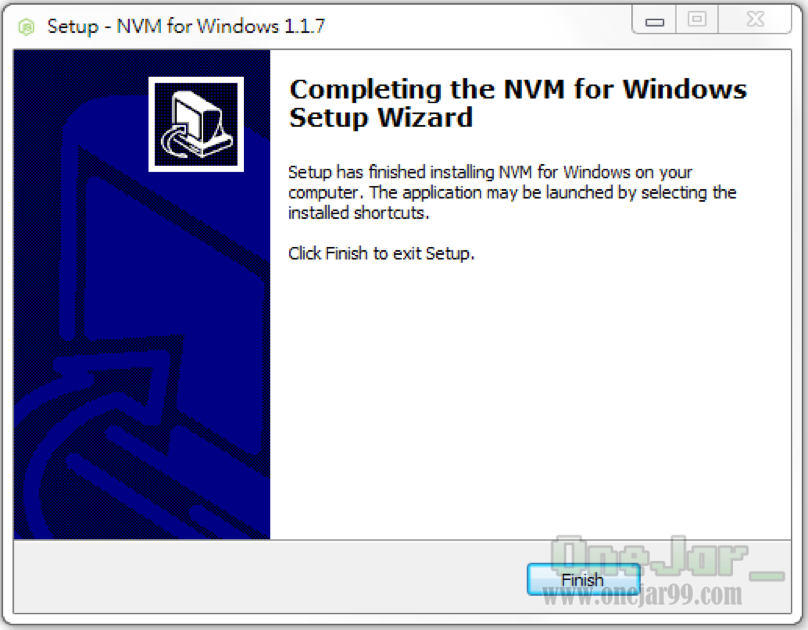

If you start a new shell, the newly set node.js version will be lost. Nvm use sets a specific version for the current shell.

#INSTALL NVM ON WINDOWS INSTALL#
This can be achieved with the following commands: $ nvm use 10.16.0 $ npm install -g following command will get the latest supported npm version on the current node version: $ nvm install-latest-npm

You may wonder how v10.16.0 uses a later version of npm than v13.9.0. The arrow in the above output shows that the current version of node.js is 10.14.0. If the specific version has already been installed, it will not be reinstalled: $ nvm install 10.14.0 v10.14.0 is already installed. # 100.0% Computing checksum with shasum -a 256 Checksums matched! Now using node v10.14.0 (npm v6.4.1) The semantic version format is defined by SemVer: $ nvm install 10.14.0 Downloading and installing node v10.14.0. We can also specify the exact version to be installed. This can be verified: $ node -v v15.4.0 $ npm -v 7.0.15 The above output states that npm 7.0.15 is used along with node.js 15.4.0. # 100.0% Computing checksum with shasum -a 256 Checksums matched! Now using node v15.4.0 (npm v7.0.15) "$NVM_DIR/bash_completion" # This loads nvm bash_completionĪfter nvm is installed, we can use the following command to install the latest version of node.js: $ nvm install node Downloading and installing node v15.4.0. In the profile file, such as ~/.bash_profile, we see these lines added: export NVM_DIR="/Users/fuje/.nvm" &. The script, install.sh, clones the nvm repository to ~/.nvm, and attempts to add the source lines from the snippet below to the correct profile file ( ~/.bash_profile, ~/.zshrc, ~/.profile, or ~/.bashrc). Nvm can be installed by curl or wget command: $ curl -o- | bash $ wget -qO- | bash
#INSTALL NVM ON WINDOWS WINDOWS#
nvm works on any POSIX-compliant shell (sh, dash, ksh, zsh, bash), in particular on these platforms: unix, macOS, and windows WSL. It’s designed to be installed per-user and invoked per-shell. NVM in build pipeline, if two different applications require different Node js version, then as per the configuration, the application will use whichever version it requires.Nvm manages node.js and npm versions. If you want to use specific version nvm use version number Nvm list - shows available versions installed by nvm Step 5: To verify the list of available versions on your machine. Nvm install 10.15.0 64 - Installs node.js 10.15.0 version as 64x Nvm install 8.9.4 64 - Installs node.js 8.9.4 version as 64x Step 4: Install and switch between two node versions. Below available versions are part of NVM. Note: You can’t find any available versions on your machine. Step 3: verify available versions in NVM. Step 2: After installation open command prompt and verify the version
#INSTALL NVM ON WINDOWS DOWNLOAD#
Step 1: Download and Install NVM from the above link. If it is installed, uninstall Node.js and also remove the C:\Program Files\nodejs folder. There is a tool that helps to maintain multiple node versions on the same machine known as NVM.īefore installing NVM make sure you don’t have node js installed on your machine. In this scenario, what should be our further course of action? Run multiple node versions on Windows with Node Version Manager (NVM). But why would you need that?Īn application is running on Node 8.x.x on a build agent(machine) and in the meantime, we developed the new application which needs to share the same build agent and it requires a higher node version.


 0 kommentar(er)
0 kommentar(er)
